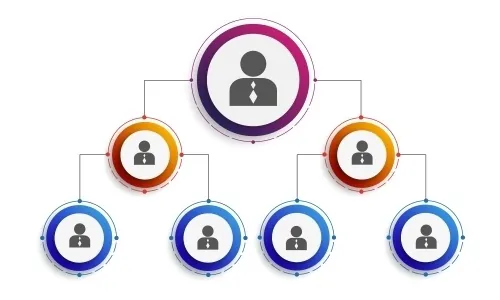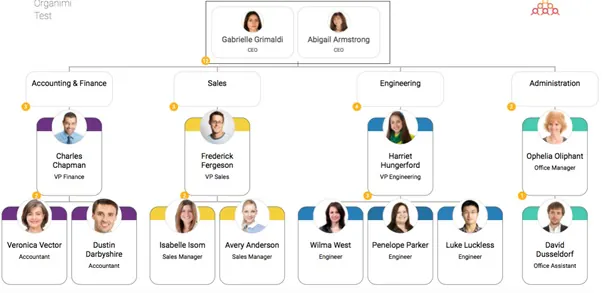“Organizational Structure or Organogram is beyond the hierarchy that is mentioned on the chart, precisely, it is more about different departments collaborating with each other in order to achieve the same objectives and goals, which in turn defines the organizational culture.”
1. Organogram – The Gateway to an Organization
Organizational Structure (Org Chart) strategically displays the co-ordination between an individual and the entire team in an organization. Structure stabilizes relationships and enables people to recognize ‘Who’s Who’ and what position they hold in the organizational structure. Organizations that do not adhere to hierarchical relationships often face distressing issues, especially due to the lack of clarity in roles and responsibilities. Org Chart helps in clarifying about the reporting system, fixes accountability as well as helps the organization to achieve the goals and objectives successfully.
2. Organogram – An Indispensable Tool
- Clarifies roles and responsibilities of various individuals, divisions and departments.
- Ease in the delegation of tasks, authority and power.
- Systematic implementation of the upward & downward channels of communication.
- Clarity in the planning and implementation of ideas.
- Defines the organizational culture and style.
- Clearly demarcates the line of authority and responsibility.

3.Organizational Structure Anticipates Organizational Culture
It is essential to have a strong organizational culture as it would help the organization in the following ways:
- Employers gain clarity regarding job roles and specifications (What to expect).
- Employees understand what response will be appropriate (What to Deliver).
- Overall, it comprehensively reflects organizational values (What to Imbibe).
4.Organizational Culture – Positive Impact on Organizational Structure
- Helps in developing a fuller understanding of the capacity-utilization of the best available human resource.
- Affects hierarchical relationship ultimately leading to greater stability.
- Helps in enhancing and consolidating horizontal as well as vertical communication.
- Helps in reducing conflicts and disagreements, which reflects healthy and strong organizational values.
- Creates a conducive environment to work and to grow together.
- Creates benchmarks and set standards of work engagement amongst the employees.
5.Sample Organogram of an Organization

6.Key Cultural Factors of Organogram
- Vision & Mission – The realization and fulfillment of Vision & Mission by the individuals, departments, board of directors/management will go a long way in ensuring organizational success.
- Capacity-Building & Support (Empathy) – Leads to the accomplishment of objectives and policies.
- Utilization of Centralized Resources for Common Benefit (Sharing is Caring) – Creates an ecosystem of community-gathering, participation and the cherished notion of collective happiness.
- Code of Ethics / Value Statement – Helps in establishing discipline, accountability and responsibility towards other employees and the organization
- Leadership – it rests on the premise that the best should lead the flock; the brightest minds should lead the brighter ones.
- Interpersonal Relationships – There is always room for establishing interpersonal relationships through informal mode of communication which finds no mention in the Org Chart.
Nonetheless, a growing organization is able to establish the desired organizational culture through one of its key constructs, i.e., Organogram.






